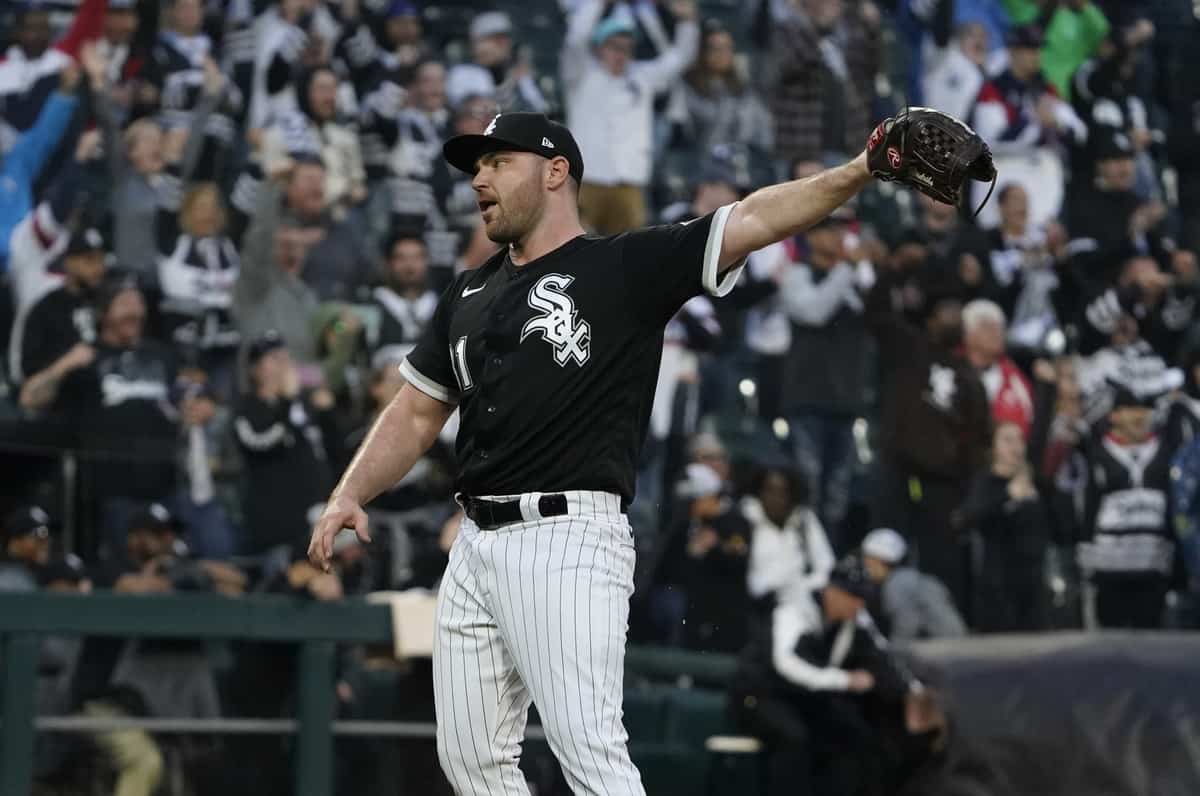Following the White Sox's season-sealing 11-inning loss to the Cleveland Guardians, I wrote about how Liam Hendriks' descent into standard closer usage was so intractable that the pattern couldn't even be broken in a last-stand situation. The only question was whether it was more a product of injury defense, or a byproduct of an organization that had stopped striving.
James Fegan spent an entire article answering that question, with Hendriks affirming the former scenario. Now my question is whether the latter would be more preferable.
To be clear, pain is just part of life for a major league pitcher. Hendriks commented earlier this season that it’s tough to remember the last time in his career he pitched without some measure of pain. Still, this season has been “a little more constant,” where he notices it at home when he’s not pitching. But the line for him is when it affects the flight of the ball on his pitches and compromises his performance. That, Hendriks says, was the driving force for deciding to go on the injured list for three weeks in June to rest a flexor strain, and why going back out for a second inning after cooling down in the dugout is not a viable option right now.
“It’s not quite capable of being able to sit down and go back out right now,” Hendriks said. “It’s unfortunate, because that’s what I pride myself on. I know that was one of the biggest selling points when I came here was the fact that I could go multiple (innings), I could give it as much as I could, go multiple (innings) and be available the next day. It’s unfortunately not kind of where we’re at right now. This year has been a tough, tough year physically for me.”
Perhaps a normal offseason and spring training allows Hendriks to reset expectations, but he'll be 34 next season, and it's hard to imagine him returning to more extreme usage patterns. That leaves more high-leverage innings to cover, and the hope is that somebody like Reynaldo López has proven he's good for his share, because the setup men that Rick Hahn added last season had their own usage concerns. Kendall Graveman struggled on back-to-back days, and Joe Kelly was prohibited from them for a good chunk of the season in which was actually available.
The White Sox bullpen could've been worse and more expensive, because Craig Kimbrel was almost unmovable. At the end of spring training, the Dodgers decided to take him on instead of carrying AJ Pollock, and as the Dodgers prepare to move on from Kimbrel, I think everybody can call it a lose-lose deal.
The Dodgers have been able to tolerate Kimbrel in ninth innings for most of the season, but that's because their lead in the NL West has been laughably large. With the postseason approaching and Kimbrel being especially vulnerable to lefties, Dave Roberts decided that he'd rather go with a closer-by-committee approach, rather than feel hemmed in by a closer other teams can plan against.
The Dodgers bullpen is deep, but it doesn't have a proven backup, so Roberts is courting easy second-guessing over the coming weeks. He sounds at peace with it.
“It’s kind of the whole mindset of just because you’ve always done something one way, doesn’t make it right,” Roberts said, when asked about not having a set closer heading into October. “It might not be traditional, but I’m not too concerned about that.”
Oddly enough, if I were forced to declare a winner of the trade, I'd probably give it to the Dodgers, simply because they'll be done with it at the end of the season. Meanwhile, Pollock's mediocrity has grown more expensive by the week. The original $10 million player option he carried for 2023 will increase to $13 million with two more starts, because it's grown by $1 million at 400 and 450 plate appearances, and will once more at 500 PA (he's at 494). Perhaps Pollock can still help the White Sox as half of a corner-outfield platoon, but that's a lot to pay for the lesser half of one.
Of all the mistakes Hahn has made, exercising Kimbrel has a case for being the worst, simply because he had option of walking away after the initial flop. He instead chose to throw good money after bad, and should Pollock's decline continues into 2023, Hahn's money will continue going in that direction. Nick Madrigal's injury issues showed the Sox traded him at the correct time, even if not for the ideal return, so Hahn could've limited the damage to a mere two-month misread. Instead, it now a chance at poisoning a third season.





